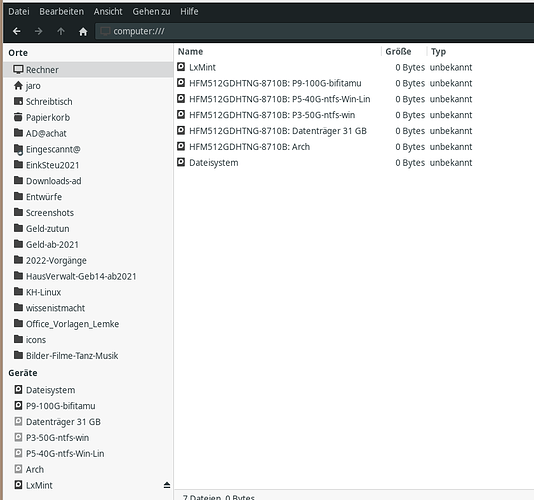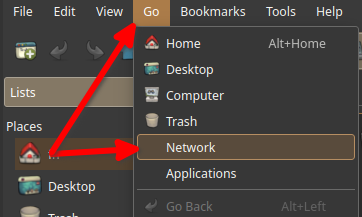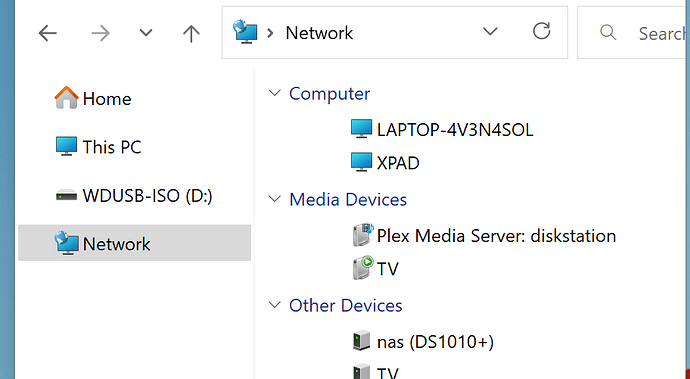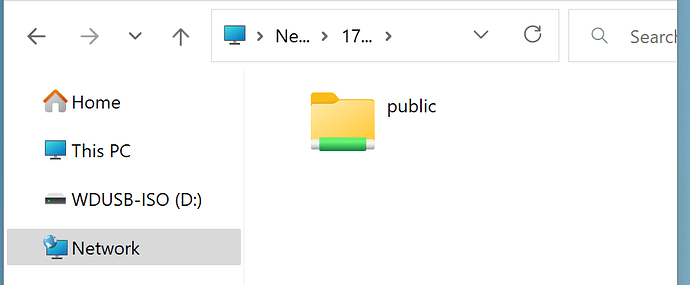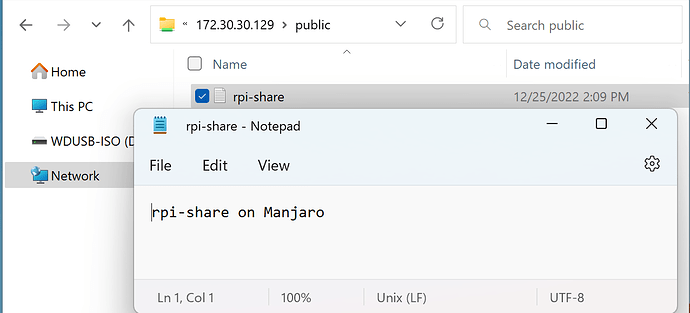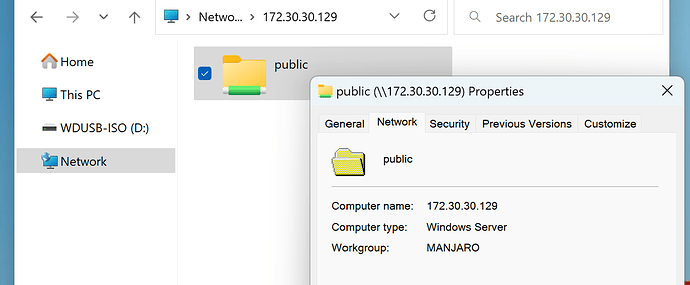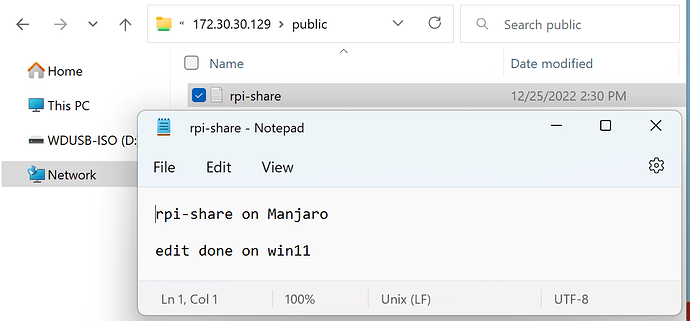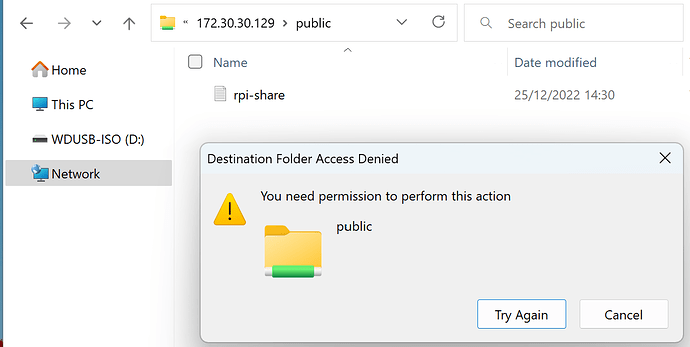Warum ist Samba nicht von Ubuntu nach Manjaro übertragbar?
Nachdem ich es nicht geschafft habe, Samba unter Manjaro zu etablieren, habe ich es unter Ubuntu (v22) getan. Als Input habe ich das folgende Tutorial aus der Manjaro Wiki gewählt.
Basic Samba Setup and Troubleshooting
Im Abschnitt “Basic Server configuration” steht eine sehr einfache smb.conf Datei; die habe ich - mit etwas anderem Pfad in dem Beispiel Share - eingetippt.
Ich habe also unter Ubuntu (1) Samba installiert, (2) meine userid mit smbpasswd -a hinzugefügt, (3) die genannte kleine smb.conf Datei eingetippt, andere Pfade festgelegt; damit funktioniert samba unter Ubuntu:
# 2022-12-05 24:00
[global]
workgroup = arminux
server string = arminux Samba Server
server role = standalone server
log file = /var/log/samba/log.%m
max log size = 50
guest account = nobody
map to guest = Bad Password
min protocol = SMB2
max protocol = SMB3
[Ubu-ad@achat]
path = /home/AD@achat
writable = yes
printable = no
[Ubu-bifitamu]
path = /media/jjubu22/P9-100G-bifitamu
# dieser Pfad ist Ubuntu spezifisch, muss unter Manjaro angepasst werden
writable = yes
printable = no
Dann bin ich im Ubuntu Dateimanager (Caja) auf “Netzwerk” gegangen, habe dort meinen PC-Namen gesehen, angeklickt - und habe meine Sharenamen gesehen.Ich habe mich unter Ubuntu unter meiner (Ubuntu) userid bei meinem Share eingeloggt und konnte auf die Dateien meines Shares zugreifen.
Dann habe ich auf meinem alten PC Manjaro gebootet, pcmanfm gestartet und konnte auch dort auf die shares zugreifen.
###################################################################
In Manjaro habe ich ebenfalls Samba installiert, meine userid mit smbpasswd hinzugefügt, die smb.conf Datei von ubuntu übertragen, den Pfadnamen meines Shares angepasst.
Es läuft nicht!
Das kann ich aus 2 Gründen nicht verstehen:
(1) ich habe es ja gemäß einem Tutorial aus der Manjaro Wiki getan.
(2) ich hätte erwartet, dass Samba bzw die Konfigurration mit smb.conf von jedem Linux auf beliebiges anderes Linux portierbar ist.
Hat jemand eine Idee?
